2012 Chevrolet Camaro ZL1 Review
Our new most favouritest muscle car ever!
By Shahzad Sheikh
Disclaimer: I haven’t driven the 2013 Ford GT500 yet (Ford sort it out!).
With that said, I have tasted what I believe to be the absolute zenith of muscle car magnificence. I have driven a beast that had me at ‘brum brum’, a car that defies the laws of electronic nannies, one that revels in its own overt masculinity and which will vaporises rubber at the drop of a clutch.
I am totally smitten by a car that cashes, with 500% interest, the cheques its looks have been writing since 2009. I am addicted to the rush of driving a vehicle that believes that muscle car means Hulk from the Avengers movie, not Lou Ferrigno from the TV series.
With the Chevrolet Camaro ZL1 an altogether new bar of desirability has been set, and currently there is nothing to touch it at this money. How much money? AED245,000 ($67,000) for the base manual we drive here. Sound like a lot?
Pft! Once you’ve driven it, it will seem like a trifle, piffling amount, because you’ll happily beg, steal, borrow and hold a country to ransom, just to pay Chevy whatever it wants for this amazing machine.
So I’ve blown the first rule of writing a review, right? I’ve given you the conclusion, right up front. And some of you will already have run off to raid your piggy-banks and head down to the dealer… ah, but some of you are still here I see. Clearly you either want more information or are just curious as to why I’m dribbling helplessly and raving about a humble Chevy.
The tech stuff
Oh there’s nothing humble about this particular Chevy, but you’re right, let’s back up a little. The ZL1 is the fastest production Camaro ever. It features the 6.2-litre LSA engine from the Cadillac CTS-V, but uprated from 556bhp to 580bhp.
The car we drove was a manual with a quoted 0-100kph time of 4.0 seconds and top speed of 290kph (although it was limited to 250kph on our car). The automatic is listed as fractionally quicker to 100kph with a time of 3.9seconds and top speed given as 296kph. It doesn’t surprise me that fine print for the acceleration runs mentions (rolling start) to allow for the wheelspin before it actually gets moving. Having said that the manual car comes with launch control.
It’s also said to be the most technically advanced car in its class, in fact the name ZL1 derives from the engine used in racing Camaros in the 1960s. Today’s engine is supercharged, featuring a Roots-style blower with a four-lobe rotor set and compact intercooler.
There’s a dual-mode exhaust which means the self-actuated valves in the pipes keep the exhaust noise down to a menacing rumble at low speeds, but open up to a free-flowing system when you’re on it, belting out a typically American V8 roar at higher revs. Even at start-up this thing boasts a meaty wake-up call.
The Tremec MG9 manual gearbox is capable of handling 30% more torque than the Camaro SS thanks to strengthened shafts and rear housing, and the Hydra-Matic 6L90 auto has also been suitably bolstered for the increased output from the engine. The auto has three modes including sequential shifts.
Underneath the ZL1 features third-generation Magnetic Ride control (yes the same suspension they use in Ferraris) and the Magneto-Rheological suspension fluid is aided by twin-wire dual-coil dampers on all four corners and a system that adjusts 1000 times per second.
The looks
Enough of the boring techy bits though. Just look at the beast. Actually it’s the same as the regular Camaro which we are so used to seeing on our roads and which remains, I hasten to add, an extremely handsome and stylish head-turning muscle car. Actually it’s same-same but different.
There’s a new bonnet with a raised carbon fibre insert and air extractors, plus a much deeper front splitter with new vertical fog lamps with air intakes for brake cooling. These features also lower the weight and increase downforce at the front.
Likewise at the back there’s a diffuser and spoiler and the car rides on new 20-inch forged alloy wheels, lighter than the ones used on the SS. They’re shod with Goodyear Eagle F1 Supercar G2 tyres developed specifically for the ZL1. And of course badge-spotters will find the ZL1 inscription on the bonnet, grille and brake callipers.
Inside there’s leather and suede upholstery, with the suede also used on the dashboard. There’s power front seats, a central interface screen flanked by touch buttons and a nine-speaker audio system. The steering wheel is flat-bottomed and there’s alloy pedals. A head-up display helps you to keep your eyes on the road, and works really well.
The four-pack auxiliary gauge system just ahead of the gear shift features a boost readout, but they’re just for show and too far down, out-of-way and obscured by the aircon’s rotary knobs, to be of any use – they do look cool though.
Performance, ride and handling
Just next to gauges are three buttons marked Tour, Sport and traction Off. These are the buttons that control the Performance Traction Management modes you may have read or heard about. There are five modes:
• Mode 1 – Traction control set for wet conditions, with stability control on and Magnetic Ride Control set on Tour.
• Mode 2 – Traction control set for dry conditions, with stability control on and Magnetic Ride Control set on Tour.
• Mode 3 – Traction control set on Sport 1, with stability control on and Magnetic Ride Control set on Sport.
• Mode 4 – Traction control set on Sport 2, with stability control off and Magnetic Ride Control set on Sport.
• Mode 5 – Traction control set on Race, with stability control off and Magnetic Ride Control set on Track. Launch control tuned for VHT-prepped drag strips.
You can select these modes through a sequence of punches on these buttons.
But do they work? God knows. You’d have to spend hours on a track going through the five configurations to really tell the difference; two days on public roads isn’t really enough.
However I can tell you that the moment you switch to Sport from Touring, the suspension firms up rather too severely for normal road use. The ride becomes hard and unforgiving with sharp movements. If you’re cruising around town or on the highway, keep it in Touring mode. The large low profile wheels and sports suspension mean that the ride will never be like a luxury car, but if you’d wanted that you wouldn’t have bought this. That said, it’s perfectly acceptable in Touring.
And that’s the issue I have with modes 3 to 5 – they all employ the Sport mode and stiffen up the ride excessively. This does mean very tight body control though, and it was only up in the mountains, when things got tighter and more demanding that I switched into Mode 3. (I never dared engage 4 or 5.)
Turn-in was faithful, the body was perfectly damped, the grip was remarkably able (you can pull 1.0G in this!) but with just enough slippage to let you know when you were approaching trouble. The thrust is always on tap and relentless no matter what gear you are in. On a road where in most cars I would have been calling on second gear to punch out of a corner or dip, in the ZL1 I could just leave it in third and occasionally even pop back up to fourth.
The jaw-dropping and deeply grunty performance is of course ever-present, and back on normal roads, you could be in sixth gear, below 2000rpm, plunge the accelerator, and you’ll feel a steady surge of momentum building up very quickly, very alarmingly, to properly fast digits.
But don’t be lazy, work those gears. The short-throw six-speed gearbox is one of the better modern self-shifter’s that I’ve tried recently. From the feel of the knob and length of its shaft – for once shorter is better! – to the quick motion and assured engagement. There is a slight notchiness but once you get used to it, you’ll hardly ever miss a gear, no matter how hard you’re trying.
The clutch is undoubtedly a firm heavy duty thing, and in traffic will certainly give your left leg a workout, but again it’s well worth it for the satisfaction it gives and the control over the drivetrain. Plus there’s the laugh-out-loud hilarity of smoke and wheelspin not just off the line from first, but also as you grab second on full-bore already doing silly-o-speed.
And here’s one of the reasons that those PTM modes, as clever as they are, are somewhat redundant because the engineers and software developers working on the ZL1 are savvy chaps who have grasped totally what it is we want from our muscle cars – the instant gratification of screech and smoke, the ability to powerslide out of a T-junction at will, and the controlled chaos of a fishtailing back away from the lights if that pesky Mustang throws down a gauntlet!
They’ve built in such a forgiving set of electronics, that you can do all of that, even with all the switches left firmly in the ‘on’ position – giving you the sense that this thing has so much God-given torque that no man-made electronics can contain it. Long live muscle-cars you hear yourself shouting – well I did anyway!
If you must use the modes – well you have paid for them – do what I did and just punch the traction button twice. That puts you in PTM 2, so you get dialled back traction, stability stays on the alert and the ride remains smooth. It’s the best compromise for the road.
If you’re lucky enough to own a ZL1, do book yourself a couple of track days though, yes you’ll use up rubber like the black stuff was going out of fashion, but it’ll give you a better understanding of what those modes and the car in general is really capable of. And the sheer thrill of opening this beast up will be well worth a trip to the tyre shop afterwards.
Here’s the verdict; that I’ve already given you
I really better wrap this up now, because honestly speaking I could go on eulogising about the ZL1 for gigabytes. It’s. That. Good.
I’ve always loved the style, presence and handling of the Camaro, but something about its performance delivery, even in potent SS guise, just leaves me a little underwhelmed when compared to its arch-rival the Mustang. Not that it is slow by any means, just that it isn’t as dramatic, loud, lewd and crude. It almost seems to be, at least in my book, a victim of its own sophistication.
I want my muscle cars to be a little on the wild side – just a tad unhinged. And the ZL1 is bucking mental!
Yes you can easily cruise around in this thing, just burbling along, Rock on the radio, looking dred, and soak up some genuine adulation, plus the reasonable practicality of a Camaro remains intact. On the other hand, the merest flexing of your right foot unleashes the monster of mayhem, a rip-snorting, barely-tamed mechanical animal that gets your blood pumping and your heart leaping for joy.
On the rare occasions I get to test a new car as visceral as this, I always champion its cause and urge those that can, to go out and buy it, because it may be the last of its kind as the world continues its slow march to sensible down-sizing and virtually self-driving cars.
And yet it seems that there are still engineers and company execs who are proper car guys, who every now and then manage to sneak one past the accountants, legislators and spreadsheet-product planners, and remind us that they still know how to build a fun car. And this Eid I shall be remembering them in my prayers: long may they continue to surprise and delight us!
2012 Chevrolet Camaro ZL1
Specs
Price: AED245,000k ($66,600)
Engine: 6.2-litre V8 580bhp @ 6000rpm, 556lb ft @ 4200rpm
Performance: 0-100kph 4.0s (3.9 auto), 290kph (296kph auto)
Transmission: 6-speed manual, rear-wheel drive
Weight: 1850kg

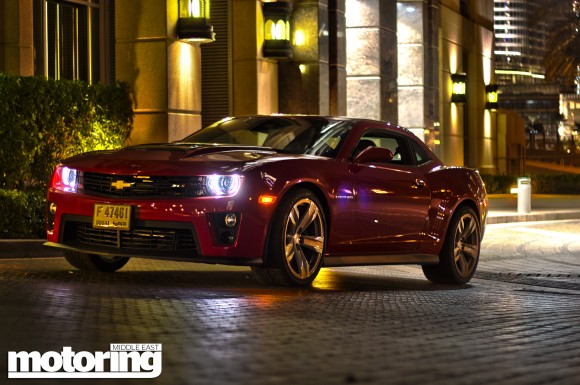
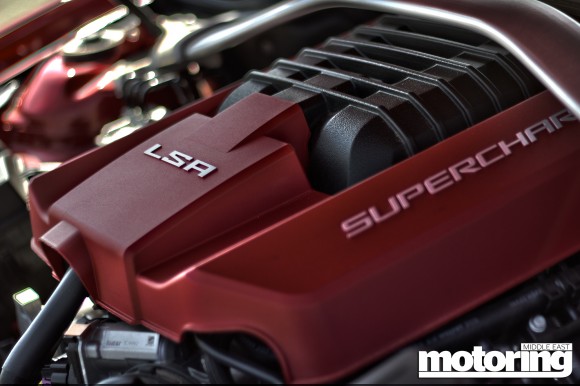
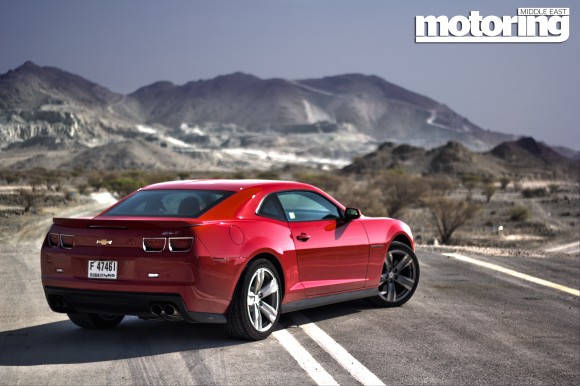
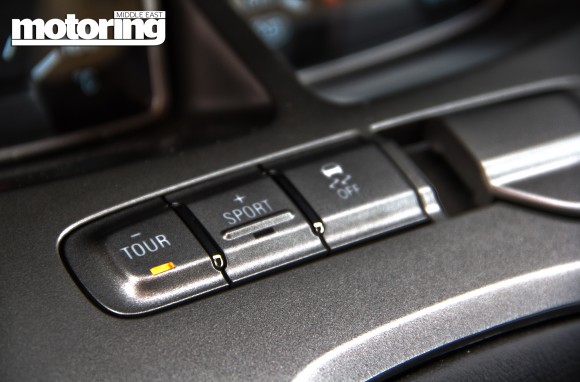






















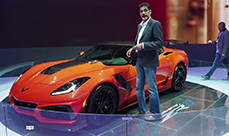

looks like an advertise. got bored.
its an amazing car